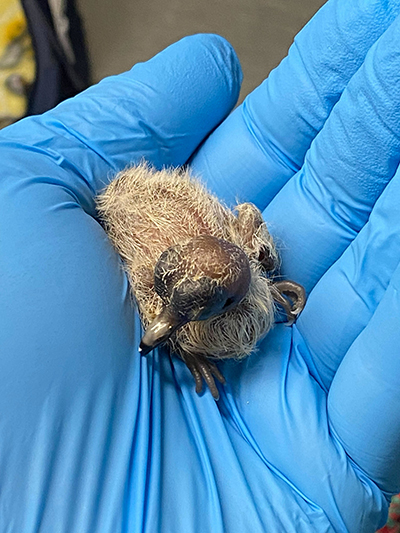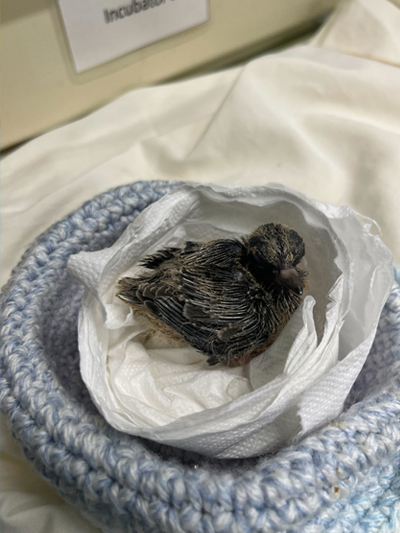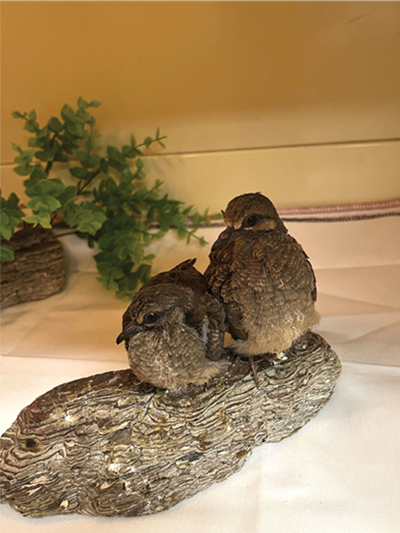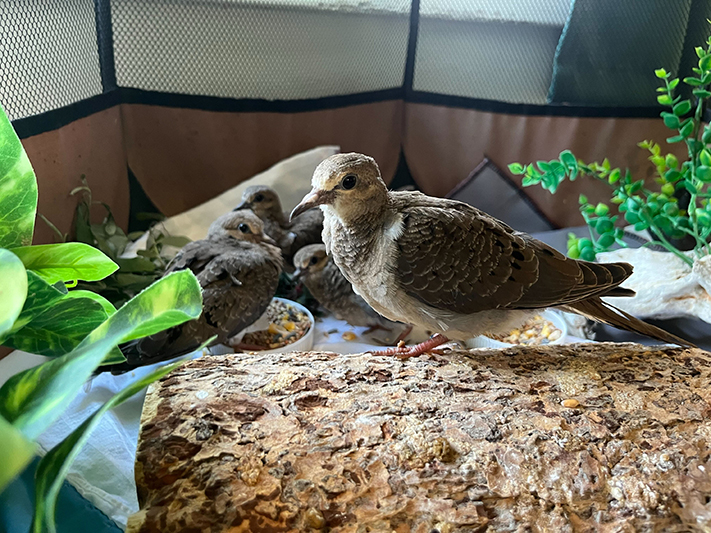The Littlest Dove
By Kristen Kanatzar, Hospital Manager
Every Spring brings hundreds of young animals to our center in need of care. They come to us for a variety of reasons including losing their mother, being injured, or being ill. One of the first species we see in the Spring is the Mourning Dove. These quiet little birds are a common visitor to many urban backyards and are known for their tell-tale cooing that is reminiscent of a sorrowful call.
One of our first doves of the season came to us on March 1st, with thankfully, no injuries and weighing only 13g- roughly the same weight as a AA battery. When doves arrive this little it is extremely critical to get them proper nutrition, which includes formula that closely mirrors the mother’s crop milk. To achieve this, we tube feed them a formula-based diet that is both protein and carbohydrate rich. Doves generally eat only seeds as adults, but when they first hatch, they require a very high level of protein to kick-start their growth and feather development.
Nestling dove during intake
Dove in nest
Patient with flock mate
Dove as a juvenile before release
After a short time, the little dove had grown enough to transition to the next stage of food, a primarily grain-based formula. Although the young dove was still being tube fed, we also started offering seeds. During this time, more young doves were admitted to our NICU, which helped our littlest one begin to understand how to interact and socialize properly with their own species.
After about a month in care, the little dove had developed enough to graduate to the final stage at our center — moving outside! At this point, we had created a group of six young doves over the course of their time inside. Once they all reached 74g, the specific weight where they no longer need human intervention and are able to eat seed completely independently, they were moved to an outside enclosure. Our aviaries are large and allow for the birds to build up their flight muscles, become acclimated to the weather, develop proper circadian rhythms, and reduce exposure to people, all of which are required for a successful release. After some time, our technicians assessed the group for release. We reviewed the original locations of the six doves and selected a local park close to where they were originally found.
On April 23th, our littlest dove was successfully released with the other five of their flock mates, which goes to show that even the smallest creatures can thrive and survive.




